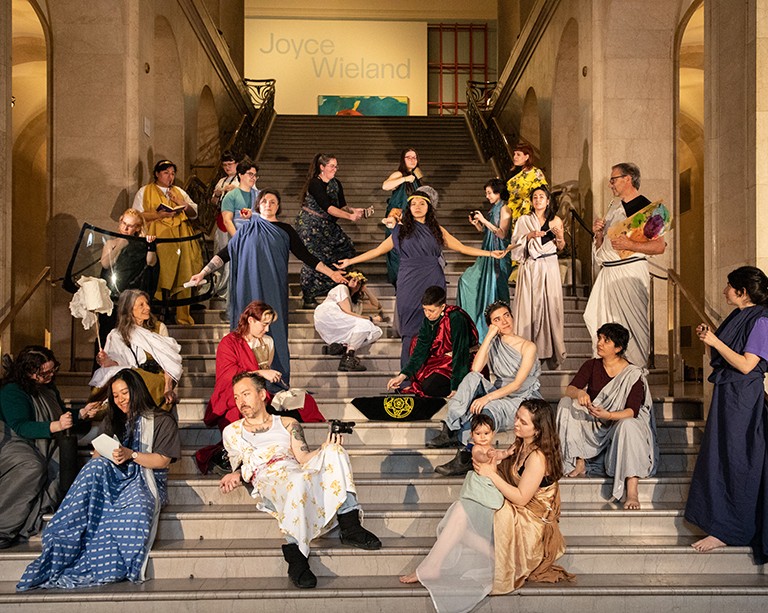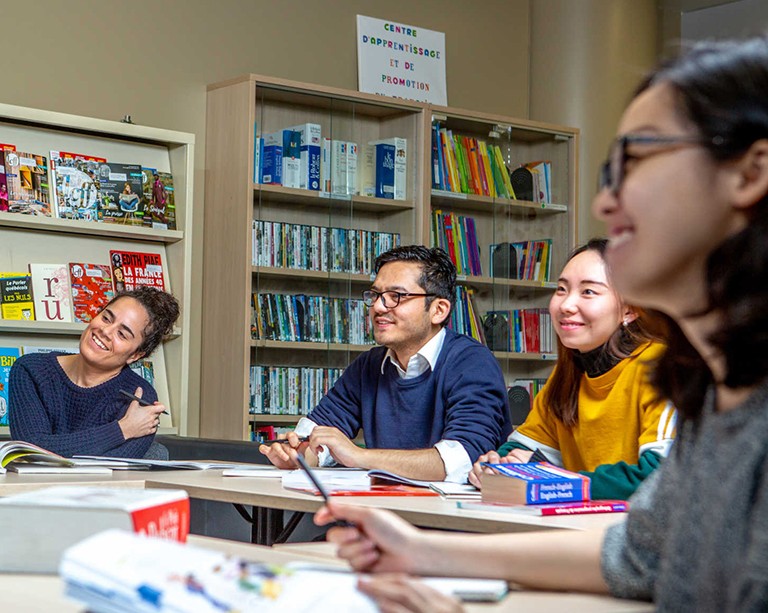Concordia alum Pedro Barbáchano receives the 2025 Bronfman Fellowship in Contemporary Art

Concordian Pedro Barbáchano, MFA 24 (Photography), has won the Claudine and Stephen Bronfman Fellowship in Contemporary Art. He shares the honour with Stanley Wany, a graduate of the visual and media arts master’s program at the Université du Québec à Montréal (UQAM).
The fellowship awards one grad or recent grad from each of Concordia and UQAM’s fine arts programs. This year’s winners take home $88,800 over two years — a top prize for emerging artists in Canada. The honour provides recipients with recognition and the resources to refine their work and extend their creative research at a pivotal point in their careers.
“What’s interesting about the fellowship is that it’s the first time I can think, 'What is the project that I really want to do?'” Barbáchano shares.
“Normally, my research is guided or limited to exhibiting or presenting in specific formats — whether that’s an exhibition, a publication or a public program. With this fellowship, I will have the freedom to think beyond these predefined formats and constraints. It’s the first time I can explore an open-ended question and let the project develop without a predetermined outcome.”
Barbáchano’s research and photographic work, which focuses on speculative archaeology and reframing monuments, has been presented in Spain, Egypt and Canada at institutions like Artexte, the Canadian Centre for Architecture (CCA) and Concordia’s Leonard and Bina Ellen Art Gallery. With a keen interest in the nature and function of documents and images, he hopes to deepen his research, particularly through historical inquiry.
“For me, it’s not just about the material or the format,” he explains. “It’s about the research questions that lie at the intersection of history, aesthetics and politics. I want to bring the audience into a conversation and let them take something from the process too.”
As he continues to explore global heritage preservation, Barbáchano intends to extend his focus from individual artifacts to a broader examination of the international circulation of Egyptian antiquities over the past two centuries. The fellowship will enable him to travel, consult archival collections internationally and better understand these artifacts' roles in both political negotiations and exploitation by tourists.
“The most interesting documents are not available online,” he reflects. “Most of the materials I am researching are often overlooked, so it’s about being on the ground, experiencing the space and letting the research evolve from there.”
 Installation view of Sightings 42: approximately 760 kg of public property, by Pedro Barbáchano, 2024. | Courtesy of the Leonard & Bina Ellen Art Gallery. Photo: Jean-Michael Seminaro
Installation view of Sightings 42: approximately 760 kg of public property, by Pedro Barbáchano, 2024. | Courtesy of the Leonard & Bina Ellen Art Gallery. Photo: Jean-Michael Seminaro
‘It gives me the space to experiment and take risks.”
With the resources provided by the fellowship, Barbáchano plans to map out the international movement of Egyptian artifacts over the past two centuries. “I want to deepen my understanding of global frameworks of heritage preservation as diplomatic networks for symbolic exchange,” he says.
“It gives me the space to experiment and take risks. It’s an invitation to undertake a project with a scope made possible only by this fellowship, along with accessing many tools and facilities to support my production.”
He adds that working at the CCA introduced new methods and influenced his creative practice: “I realized that my artistic practice, which involves presenting research on the built environment to different audiences, is very similar to what they do. It was highly enriching to see how architects approach similar challenges. That experience gave me a lot of new ideas on how to think about my own practice, and it opened up new tools and ways of organizing space through design.”
Looking ahead, Barbáchano is excited to expand his research, explore new sites and contribute to ongoing discussions about history, heritage and the politics of cultural preservation. He’s also anticipating a solo show at Centre Clark in Montreal in spring 2026.
“The opportunity to present a solo exhibition in Montreal for the first time is incredibly exciting," he shares. "These exhibitions will be an important next step in my career as I continue to refine my artistic vision and share it with the public."
 Fellow winner Stanley Wany, a graduate of the Université du Québec à Montréal (UQAM).
Fellow winner Stanley Wany, a graduate of the Université du Québec à Montréal (UQAM).
The Claudine and Stephen Bronfman Fellowship in Contemporary Art has awarded 30 other exceptional artists over the past 15 years:
- 2024: Kuh Del Rosario (Concordia) and Lynn Kodeih (UQAM)
- 2023: Kyle Alden Martens (Concordia) and Maude Arsenault (UQAM) and
- 2022: Diyar Mayil (Concordia) and Rémi Belliveau (UQAM)
- 2021: Nico Williams (Concordia) and Leila Zelli (UQAM)
- 2020: Mara Eagle (Concordia) and Heidi Barkun (UQAM)
- 2019: Madeleine Mayo (Concordia) and Céline Huyghebaert (UQAM)
- 2018: Frédérique Laliberté (Concordia) and Émilie Serri (UQAM)
- 2017: Andréanne Abbondanza-Bergeron (Concordia) and Martin Leduc (UQAM)
- 2016: Yannick Desranleau (Concordia) and Guillaume Adjutor Provost (UQAM)
- 2015: Velibor Božović (Concordia) and Myriam Jacob-Allard (UQAM)
- 2014: Brendan Flanagan (Concordia) and Marie Dauverné (UQAM)
- 2013: Kim Waldron (Concordia) and Nadia Seboussi (UQAM)
- 2012: Julie Favreau (Concordia) and Sébastien Cliche (UQAM)
- 2011: Pavitra Wickramasinghe (Concordia) and Aude Moreau (UQAM)
- 2010: Steven Bates (Concordia) and Véronique Savard (UQAM)
Find out more about Concordia’s Faculty of Fine Arts.


